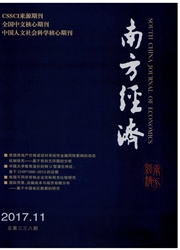

 中文摘要:
中文摘要:
摘要:本文在Zou(1996)的框架基础上,通过内生政府支出,并且将生产性支出设定为存量,求解一个含有私人消费、公共消费、私人资本存量和公共资本存量的动态系统。结论表明,存在一个最优资本产权结构,使得经济能够登上平衡增长道路。与Barro(1990)等不同的是,本文的模型将转型与经济增长紧密联系起来,用资本产权结构的动态变化来表征经济的转型过程,进一步地,财政政策的动态学也有了市场基础。本文将Zou(1996)两步法与主流的拉姆齐方法作了对比,将Barro(1990)的政府规模静态问题演变为一个动态问题。
 英文摘要:
英文摘要:
In this paper we solve a dynamic system, which contains private consumption, public consumption, private capital stock and public capital stock, on the base of Zou (1996) ' s framework. It is concluded that there exists optimal property structure of capital which make the economy reaches balanced growth path. Different from Barro (1990), the model we develop combines transition and economic growth and transition can be described in terms of property structure of capital. Furthermore, the dynamics of fiscal policy has the base of market.
 同期刊论文项目
同期刊论文项目
 同项目期刊论文
同项目期刊论文
 期刊信息
期刊信息
